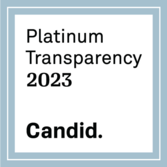Contaminants, or toxins, found in sediments include bioaccumulative contaminants that bind to lipids and fats (Table Ia, below). These types of toxins transfer efficiently through the food chain. Other types of toxins include those such as heavy metals or many Polycyclic Aromatic Hydrocarbons (PAHs) that may pose less biomagnification risks but can affect organisms directly by skin (dermal) contact or ingestion (Table Ib, below).
Many toxic pollutants in sediments are persistent chemicals, resist natural degradation, have low solubility (i.e. hydrophobic "water-hating"), and remain in the environment for long periods of time. One example of a persistent toxic pollutant is the chemical class of polychlorinated biphenyls (PCBs). PCBs are a group of synthetic organic chemicals that contain 209 possible individual chlorinated biphenyl compounds. They are not produced naturally, but are the products of industrial processes. The major sources of PCBs are environmental reservoirs from past industrial practices, and thus they are considered “legacy” contaminants. Even though these legacy contaminants have been banned or limited in use, they persist in the environment and are a continuing cause for sediment contamination and adverse biological effects. For example, severely high levels of PCBs have recently been measured in Killer Whales (Orcinus orca; Hayteas and Duffield, 2000; Ross et al., 2000b) and pose health risks to this species and other marine mammal species (Ross et al., 2000a). Also, these contaminants are causes for existing and new fish consumption advisories throughout U.S. coastal waters (USEPA, 2001).
Other toxic contaminants are emerging as significant threats to marine systems. These include polycyclic aromatic hydrocarbons (PAHs) and Mercury. NOAA’s National Status and Trends program has found that levels of these contaminants persist in coastal ecosystems and have not decreased (NOAA, 1998). As more research is performed on contaminants, a greater burden of evidence reveals that effects may be occurring to both wildlife and humans at levels lower than previously thought. This is true for PAHs and Mercury as well as legacy contaminants such as dioxins and PCBs.

